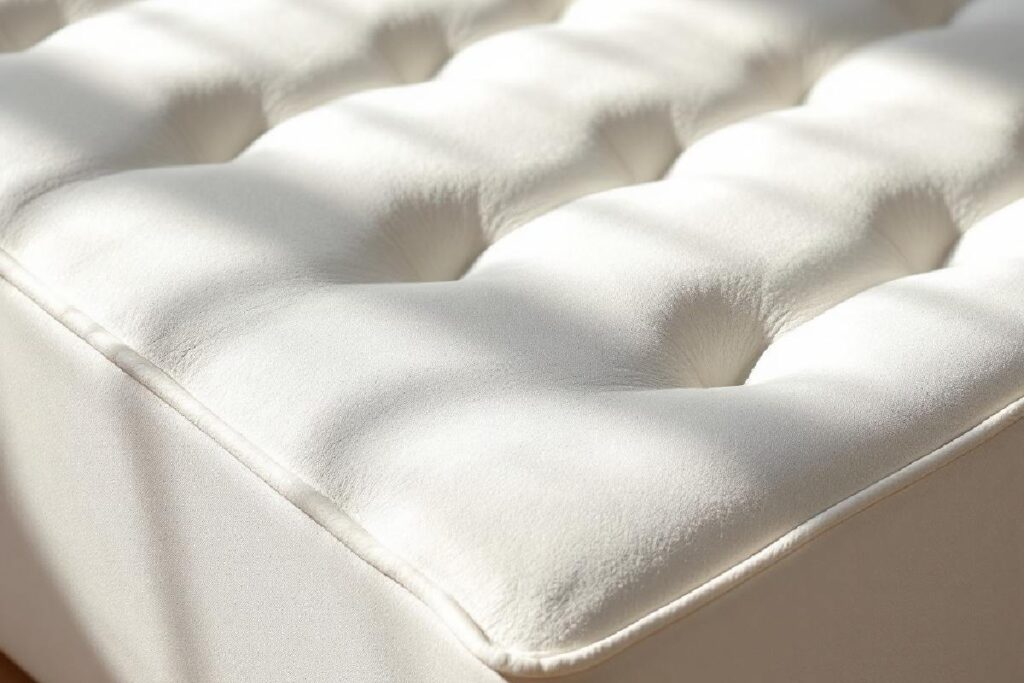The manufacture of modern mattresses is a complex process that involves a wide variety of specialized machines. These mattress manufacturing machines are designed to enhance productivity, ensure consistency, and maintain the high quality that consumers expect from a mattress. From industrial sewing to cutting and packaging, each machine plays a crucial role in the creation of a finished product. In this article, we will explore the key machines used in mattress manufacturing and their functions.
Industrial Sewing Machines
One of the most vital steps in mattress manufacturing is sewing. Industrial sewing machines are specifically built for heavy-duty applications and are designed to handle thick fabrics, foam, and other materials used in mattresses. These machines come with various attachments to perform different tasks efficiently.
Common Attachments and Processes
- Tape Edge Sewing Attachments:
- Used for stitching the edges of a mattress, giving it a clean and finished appearance.
- Helps in securing layers of fabric, foam, and quilting together to form the final product.
- Zipper Attachments:
- Used for mattresses with removable covers, allowing for easy cleaning and maintenance.
- Facilitates the precise application of zippers along mattress sides.
- Quilting Machine Attachments:
- Utilized to stitch decorative and functional patterns on the top fabric layer of the mattress.
- Enhances both the aesthetic appeal and structural integrity of the mattress.
- Walking Foot Mechanism:
- Ideal for sewing through multiple layers of thick fabric and foam without shifting.
- Ensures consistent stitching quality across the entire surface of the mattress.
Industrial sewing machines ensure that all fabric components are securely stitched together, providing durability and strength to the final product.
Cutting Machines
Accurate cutting of materials is essential for both efficiency and quality. Cutting machines are designed to handle various materials used in mattress production, including foam, fabric, and innersprings. There are several types of cutting machines employed in the process:
Types of Cutting Machines
- Foam Cutting Machines:
- These machines use high-precision blades to cut foam to the exact dimensions required for different mattress layers.
- Some advanced models are equipped with computer-controlled systems (CNC) for intricate cuts and shapes.
- Fabric Cutting Machines:
- Designed to cut large rolls of fabric into panels and sections that match mattress specifications.
- Often equipped with automated features to ensure consistent and efficient cutting.
- Spring Cutting Machines:
- Used to cut and shape the metal components of innerspring units.
- Ensures that springs are uniform in size and function.
These machines contribute to minimizing material waste and improving production speed by ensuring precise and repeatable cuts.
Quilting Machines
Quilting is an important step that enhances both the comfort and visual appeal of a mattress. Mattress quilting machines stitch together multiple layers of fabric, padding, and foam in intricate patterns. The stitching not only adds aesthetic value but also helps maintain the structural stability of the mattress over time.
Modern quilting machines often feature programmable designs, allowing manufacturers to offer a variety of patterns to meet different customer preferences.
Compression and Packaging Machines
Once the mattress has been fully assembled and inspected, it needs to be packaged for storage and transport. Compression and packaging machines play a critical role in this final stage.
Functions of Compression and Packaging Machines
- Compression Machines:
- Compress the mattress to a fraction of its original size, making it easier to handle and ship.
- Reduces shipping costs by allowing more products to be transported in a single load.
- Vacuum Sealing Machines:
- Vacuum-seal the compressed mattress to maintain its reduced size until it is ready to be unpacked by the customer.
- Provides protection against dust, moisture, and damage during transportation.
- Automated Wrapping Machines:
- Apply protective plastic wrap to the mattress.
- Ensure that the product remains clean and intact throughout the shipping process.
Other Specialized Machines
In addition to the core machines mentioned above, mattress manufacturing often relies on other specialized equipment to streamline production.
Examples of Other Machines
- Glue Application Machines:
- Apply adhesive to bond different layers of foam and fabric.
- Ensure uniform glue distribution for a stable and durable mattress structure.
- Edge Support Installation Machines:
- Assist in attaching edge support reinforcements, which prevent sagging and improve the mattress’s longevity.
- Inspection and Testing Machines:
- Perform quality control checks to ensure that each mattress meets safety and performance standards.
- Include pressure testing devices to simulate years of use and evaluate durability.
Conclusion
The mattress manufacturing process is highly dependent on the efficient use of various machines. From industrial sewing machines with specialized attachments to cutting, quilting, and packaging equipment, each machine contributes to creating high-quality, comfortable, and durable mattresses. By investing in advanced machinery, manufacturers can achieve greater productivity, reduce waste, and deliver consistently superior products to their customers.

